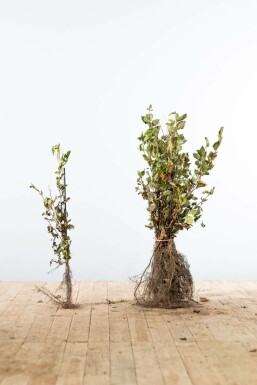
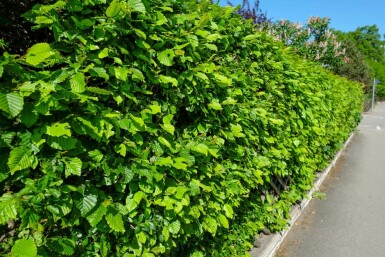




Updated on 10 September 2025
We regret to inform you that we are currently unable to ship orders to the United Kingdom. We anticipate being able to resume shipments at the beginning of 2026.
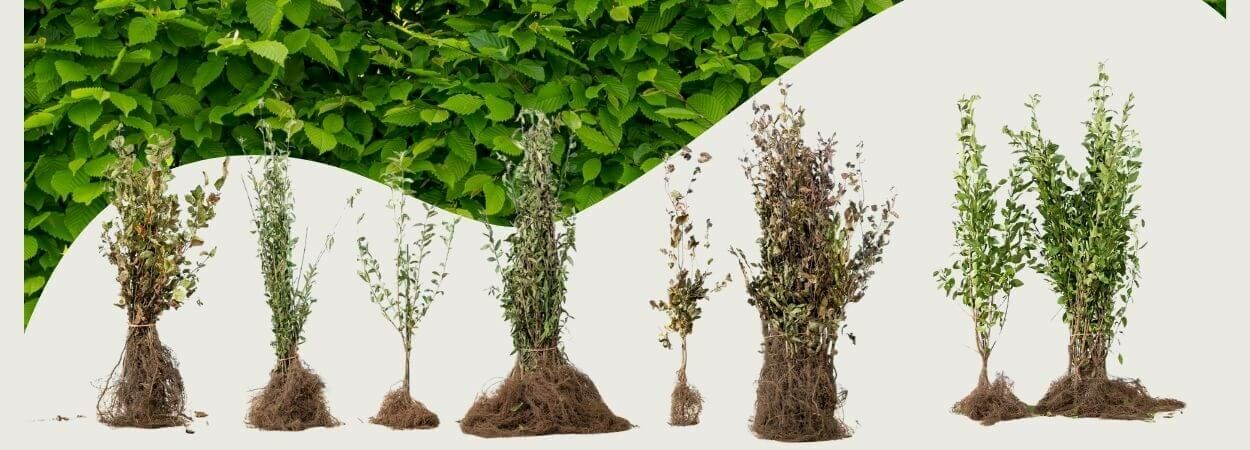
Planting bare root plants: what are the benefits and how do you do it?
Bare root plants are a popular choice for those who want to create a green hedge or garden bed quickly and at a good price. In this blog you will read what bare root plants are, what benefits they have and how you can plant them step by step in the right way.
Bare root plants are young plants delivered without a pot or root ball. You receive them with bare roots, often tied in a bundle. This way of growing and delivering has been common for many years in nurseries, especially for hedges and large amounts of planting. Bare root plants are usually delivered from October to April, when the plants are at rest.
Please note that bare root plants delivered in (early) spring may have no or only a few leaves (these still need to grow), and some species such as beech may even still have dry leaves from the previous season. Bare root plants delivered in autumn may already have yellow and/or dry leaves, because they are preparing for winter.


Bare root plants are cheaper than pot or root ball plants. This makes them ideal if you want to plant a long hedge or a large garden area without high costs.
Because bare root plants do not have a pot or root ball, they are light and easy to handle. You can put them quickly into the soil and work efficiently, even with larger numbers.
Because bare root plants are delivered without a plastic pot, you save directly on waste. It is an environmentally friendly alternative that also needs less transport space.
Bare root plants are especially suitable for hedges, but they can also be used for garden beds and bigger projects, such as landscaping or greening a yard.
Next to the benefits, there are also some disadvantages. Bare root plants are more sensitive to drying out (watering in time is very important!) and the chance of loss after planting is higher than with plants in pots or with root balls. But with the right soil preparation, the right way of planting and good and timely care, you can reduce this risk to a minimum.
Place the plants in a bucket of water for a few hours before planting. This way the roots take up enough moisture before they are put in the soil.
Clear the strip where you want to plant from weeds and dig a trench that is 5–10 cm deeper than needed (about 30/40 cm). Also make some deep holes in the sides for good drainage. This prevents the roots from staying too wet and helps healthy growth. Always follow our soil preparation instructions.
Put the plants neatly in the middle of the trench. You can choose a straight line or a zigzag pattern. A zigzag will later give a denser hedge.
Let someone else fill the trench while you hold the plants straight. Press the soil firmly so the roots have good contact with the ground and the hedge stands stable.
Water directly and generously after planting. This makes the soil close well around the roots, avoids air holes and increases the chance that the plants will grow quickly. In the first year after planting, water the bare root plants in time to prevent drying out.
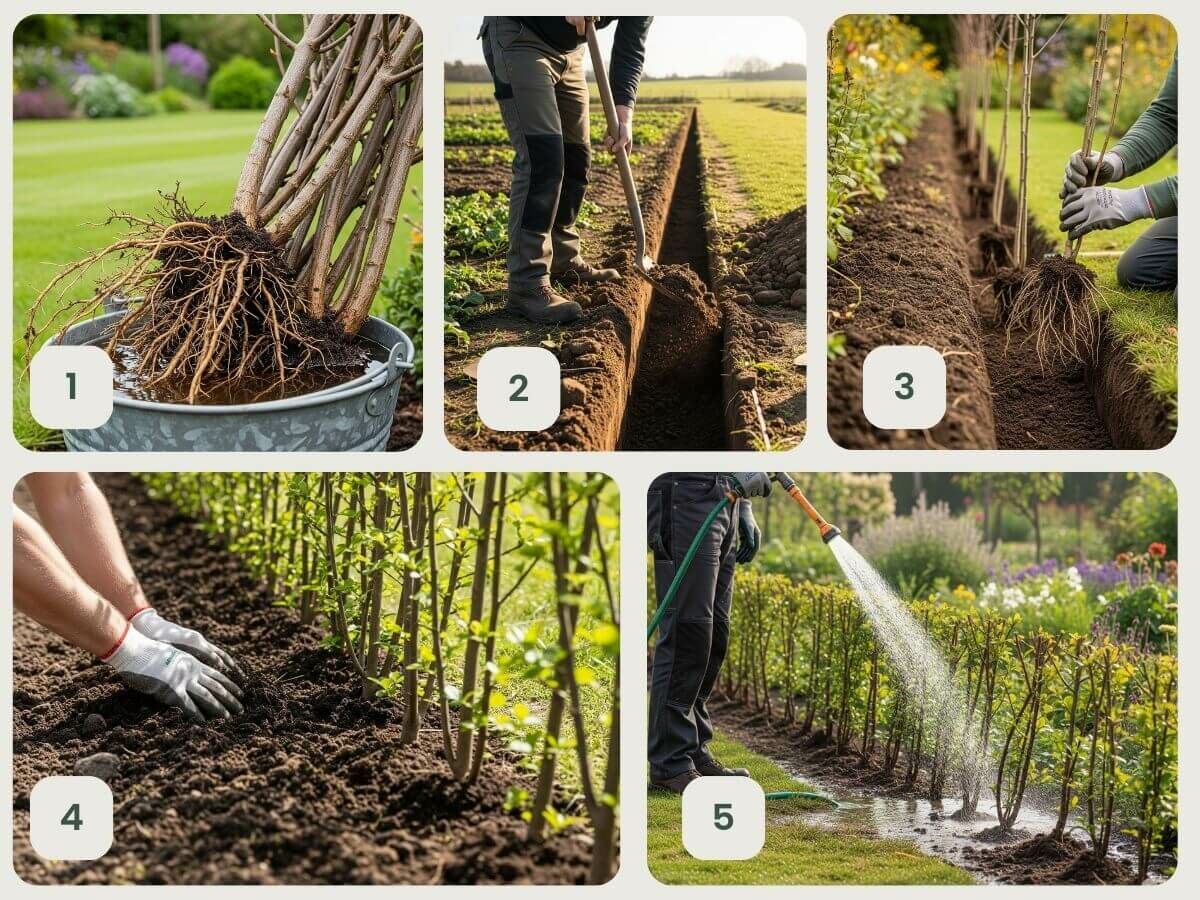
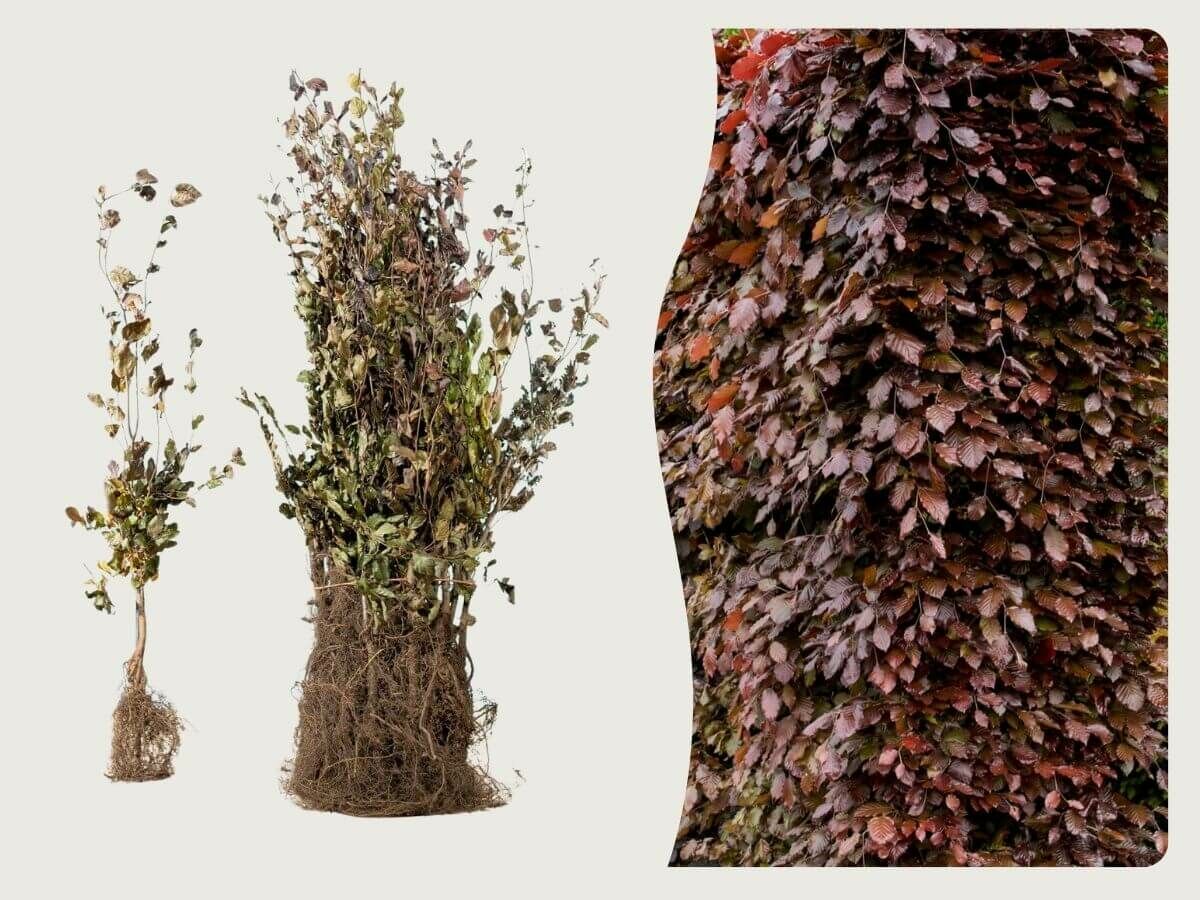

Bare root plants are a smart choice for everyone who wants to garden affordably and efficiently. Thanks to the easy planting and the sustainable benefits, they are ideal for both small gardens and large projects. Whether you want to plant a hedge for more privacy or fill a green bed: with bare root plants you get quick results. Start this planting season and see for yourself how easy and effective bare root plants are.
This is the place to be to get inspired when it comes to realising a greenery project of any size.
A new blog article with fun tips and facts will appear here every month, and our social media channels are also full of inspiring posts.
Allow yourself to be surprised and follow us!
More blogs